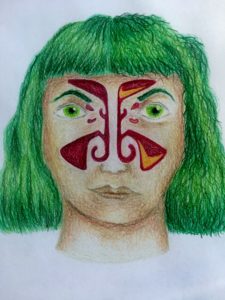
Unless you’re congested, you probably don’t spend much time thinking about the volume of air you breathe into each nostril. Surprisingly, each nostril delivers a different amount of air to your lungs through a mysterious phenomenon called the nasal cycle.
What is the nasal cycle? If you close your mouth and inhale slowly through your nostrils, you’ll notice one nostril seems a bit more congested than the other. That’s the nasal cycle at work. Your body is alternating the flow of air between the nostrils every 1-4 hours. In other words, sometimes we breathe predominately through the right nostril and other times we breathe predominately through the left nostril. The nasal cycle feels like an alternation between congestion and decongestion of the nostrils. While you aren’t sick, one nostril is constricting airflow while the other one is open and allowing a free flow.
Some in the medical community are unclear as to why the nasal cycle exists. While others say that alternating between nostrils prevents excessive drying, crusting and infections that would be caused by a constant, static flow of air. Still other research suggests the nasal cycle is necessary to give us an optimal sense of smell since different chemical compounds absorb through our nasal mucous at different rates; if both nostrils were wide open, smells from our food and other odors would move through the nose too quickly making it impossible to smell certain compounds.
Ayurvedic medicine has a completely different take on this. It suggests that alternating the volume of air through each nostril stimulates the cerebral cortex. For example, when breathing predominately through the left nostril, you are stimulating the right cerebral cortex, which controls the parasympathetic functions. This system is responsible for activities of “resting and replenishing” that occur when the body is relaxed. According to Ayurvedic medicine, left nostril breathing increases acidic secretions and is warming. When breathing predominately through the right nostril, you are stimulating the left cerebral cortex, which controls the sympathetic functions. The sympathetic nervous system is responsible for stimulating activities associated with the ‘fight-or-flight’ response. Right nostril breathing increases alkaline secretions and is cooling. Hatha yoga (part of Ayurveda) has a variety of breathing exercise that work between the two nostrils to purposely stimulate these parts of your body, especially if they are out of balance. See David Frawley’s book Neti: Healing Secrets of Yoga and Ayurveda for more information on this.
If you want to know which nostril is the dominant one in any given moment, you can place a small mirror beneath your nose and just above your lip. Hold it horizontal to the floor and exhale through your nose. That exhale will create condensation on the mirror from each nostril; the largest amount of condensation is the dominant nostril for that moment. To track how often you change breathing cycles see this link at Vanderbilt University for instructions.






Informative but there are several natural or home remedies that you can apply successfully with less or no side effects. They may provide immediate relieve, if you have some methods then please share.
An easier method for testing which nostril is dominant at any time is to block one and breath. Then block the other and breath… one will be alot easier to breath through… and occasionally you can find the “cross over zone” when the cycle is in action.